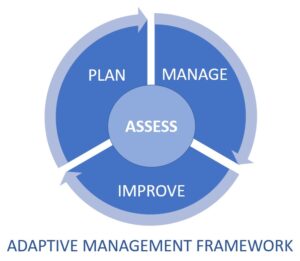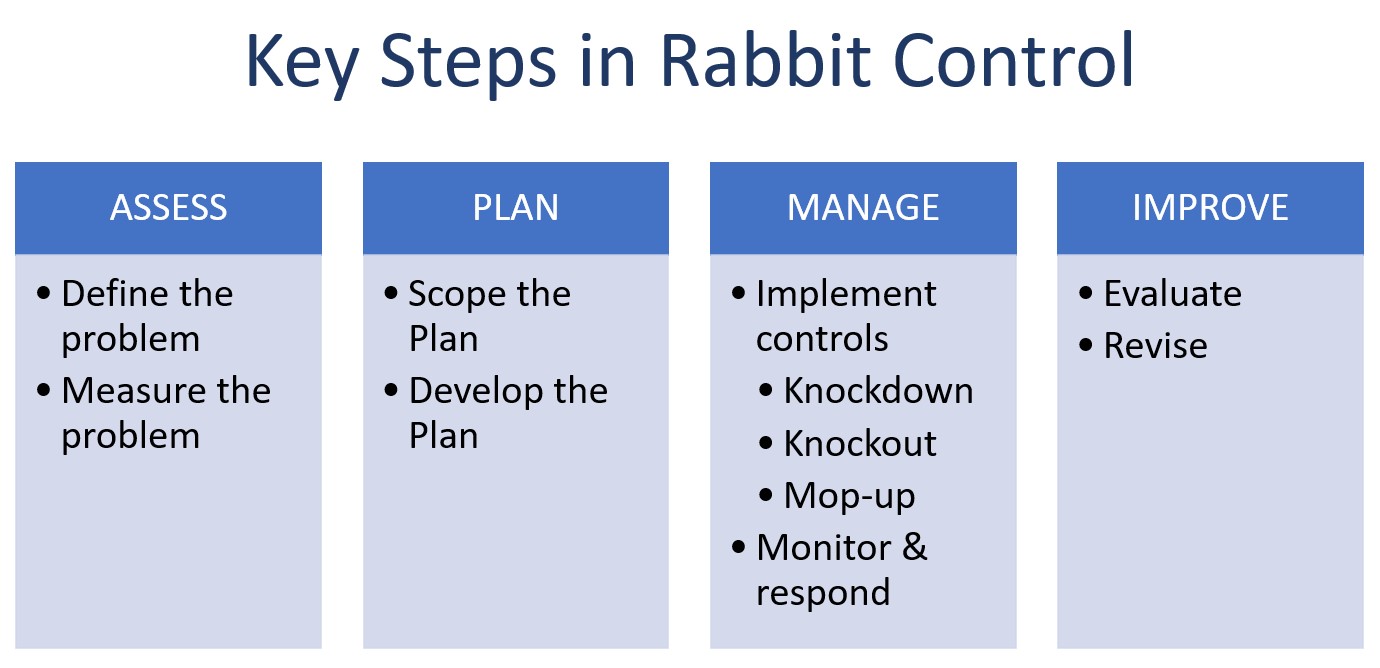Overview
Effective pest management is about fixing a problem. It is not about the quantum of pests removed. It involves specifying the problem, understanding the cause of the problem, and finding solutions that resolve the problem.
Immediate problems may be solved by controlling a target species (removing the immediate cause), but longer term solutions often require broader, more integrated and strategic solutions. Controlling rabbits often means working with neighbours and various organisations for effective control across a landscape.
‘Adaptive management’ is recommended practice for pest control. It is based on a ‘plan, do, review’ approach that enables rapid action within a process of continual improvement. It is presented as; Assess, Plan, Manage & Improve. ‘Key Steps’ present a recipe for success. A Template of Questions is available as a guide through the process and a Rabbit Control Plan outline is available to record your plan.
It is recommended that all ‘key steps’ are followed, but with adaptation to suit individual circumstances. In some cases, it might not be feasible to follow every aspect of the framework.
- Key steps for rabbit control
- Strategic pest management
- Adaptive management framework


Assess
The first step in adaptive pest management is to define the problem and understand as much as possible about the pest.
- Define the problem. Rabbit damage.
- Measure the problem. Know your target.
Plan
Getting busy with rabbit control may be a first response to rabbit problems, but time spent planning will ensure more likelihood of success (especially in the long term), more cost-effective outcomes, and better alignment with property management overall.
- Scope the plan.
- Develop a plan.
Manage
Pests are animals causing harm or significant disturbance in areas where they are not wanted. They often have the ability to flourish if left unmanaged in suitable environments. Control options can include culling as a form of population control, stopping pests from thriving or breeding, and exclusion – keeping them out of priority areas. It is rare that any single control measure will be completely successful. Even very effective biological controls require support from additional control measures.
- Implement selected controls
- Follow-up: Monitor and Respond
Improve
Continual learning and improvement is a feature of adaptive management. Reviews of how well a plan was implemented and how effective it was are essential, but great value comes from regularly reflecting on how things are going during implementation, enabling minor adjustments and immediate improvements.
The mantra of ‘Plan, Act, Review’ can be applied at different scales and time-frames. Always have a plan, but always be prepared to change it in light of experience gained.
- Evaluate the plan
- Revise the plan. Modify
